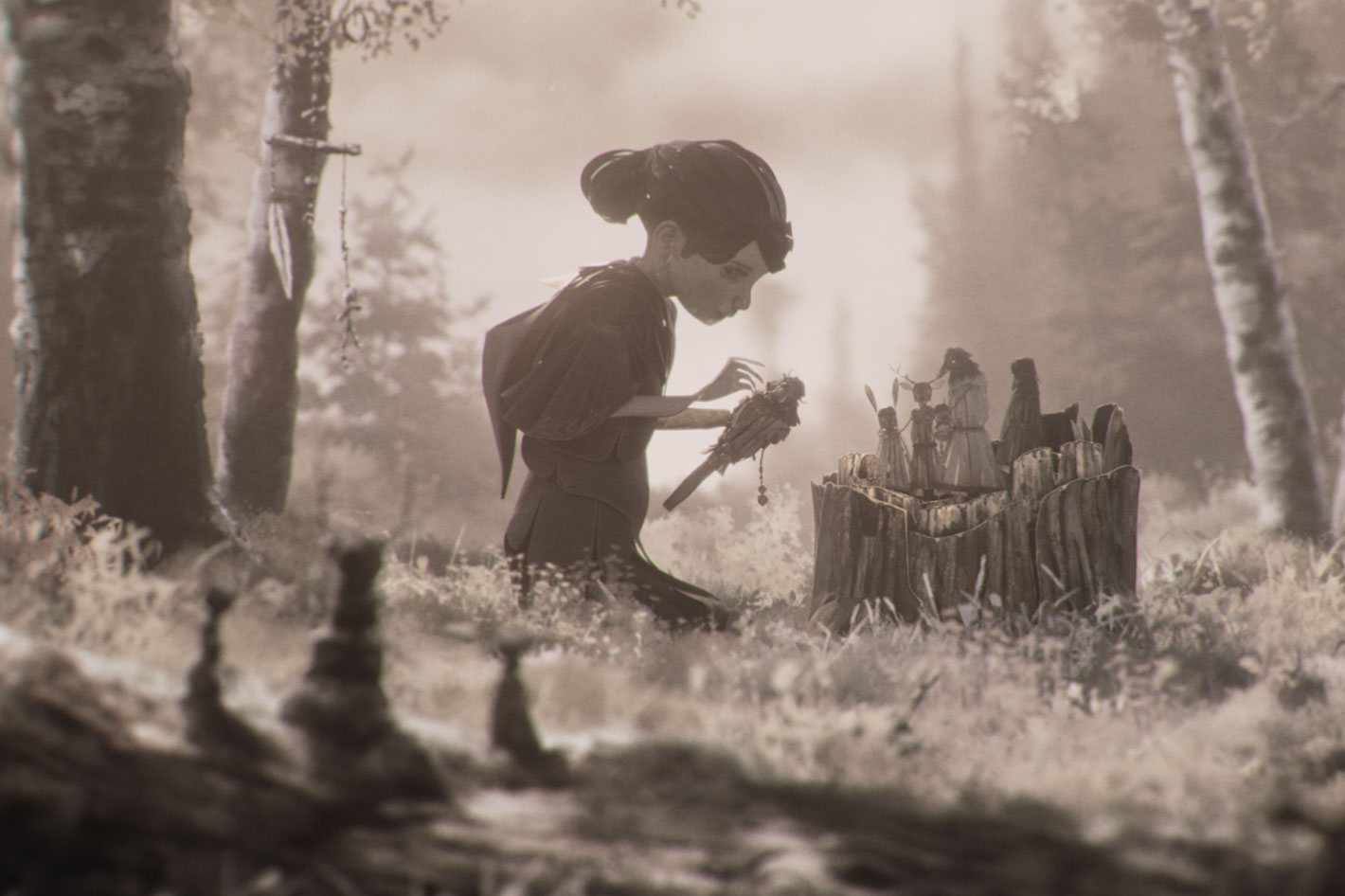
After nearly a decade in development, E.D. Films’ ambitious, experimental animated short film Return to Hairy Hill (aka Retour à Hairy Hill) will make its eagerly anticipated debut this week at Montreal’s prestigious Sommets du Cinéma d’Animation (Animation Film Summit). Featuring several first-of-their-kind techniques — including the studio’s proprietary 2D to 3D pipeline — the short will be featured in the official competition alongside the best animated films originating from Canada. The festival will be held in Montreal at the famed Cinémathèque Québécoise on May 9-14.
Written and directed by E.D. Films co-founder, Daniel Gies, Return to Hairy Hill utilizes several experimental techniques developed in-house by the multidisciplinary studio, beginning with its industry-leading PSD to 3D plugin that converts 2D Photoshop drawings into stylized 3D content. The film also relied on a new VR puppet system, a new animation export tool for game engines and more.
In fact, Return to Hairy Hill is an example of how old and new tools can be used together to create magic. The company says that the tools mentioned above “were combined with hand-drawn ink illustrations, digital paintings, paper puppet models, hand-drawn animation, traditional keyframe animation and more. The result is a unique animated short that leverages CG creation tools while creating the unique impression of stop-motion animation for the character performances.”
“When we originally started planning out Return to Hairy Hill more than ten years ago, we intended to make a film that was essentially 2.5D puppet animation, but we found that the format wasn’t able to convey the level of emotion we wanted,” said Gies. “We decided to utilize a more traditional 3D approach. Being a small team with very little 3D production experience, we knew that if we were going to utilize our strengths as 2D storytellers we would need to develop new tools and techniques to pull off such an ambitious project. The effort was very much worth it, and our small team was able to create a new type of 3D world that has a unique beauty and feel.”
Unreal Engine was used by the team to find the right balance between aesthetic and emotion. Using Unreal’s pre-visualization and real-time rendering tools, E.D. Films — one of the first animation studios ever to win an Epic MegaGrant — was able to define the look of the project. The film’s fabrication needs also led to the creation of Scene Track by E.D. Films, an open source tool that allows users to record and export animation data within game engines. From there, the team pivoted to Autodesk’s Maya, where they could import hand-drawn illustrations to create the background environments and try out different camera angles.
Gies experimented with several looks for the characters, creating both physical paper puppets and CG counterparts for each iteration. For the siblings, he elected to remove the faces entirely, both in reference to indigenous doll-making practices in the area, and the fact that the protagonist can no longer recollect what they look like. Instead, she remembers their personalities, which are reflected by animalistic touches like the timidness of the youngest sister embodied by a rabbit, the independence of the brother translated as a fox and the cautious trepidation of another sister, presented as a deer. The design of the bird-like mother, however, was meant to show that she was a creature trapped between two worlds.
With memory playing a major role in the film, Gies and the team at Montreal’s Audio Coara decided to use tape machines and old tape recordings to convey the feeling of a memory degrading over time. Sound designer Tyler Fitzmaurice traveled to six different remote cabins and recorded the sounds of nature, including animals in the wild, water flowing, trees creaking in the wind and more. The audio team then experimented with several types of physical paper to capture the sounds of sheets bending, which gave the animated puppets a unique noise.
The techniques used in the film are being shared by E.D. Films. Following the completion of the project, the company created a tutorial offering artists a look at how they can take advantage of the studio’s PSD to 3D plugins. The full behind-the-scenes tutorial is available at no cost and can be viewed here (video above) or directly on E.D. Films YouTube channel. An original book titled “Retour à Hairy Hill / Return to Hairy Hill: The Art of the Short Film” is also due out this summer. Written by renowned author and animation journalist Ramin Zahed, the book highlights the lengthy creation process, beginning with Gies’ research into his family history, which was ultimately a shared human story. It also offers a deep dive into the making of the film, including the technical details.
